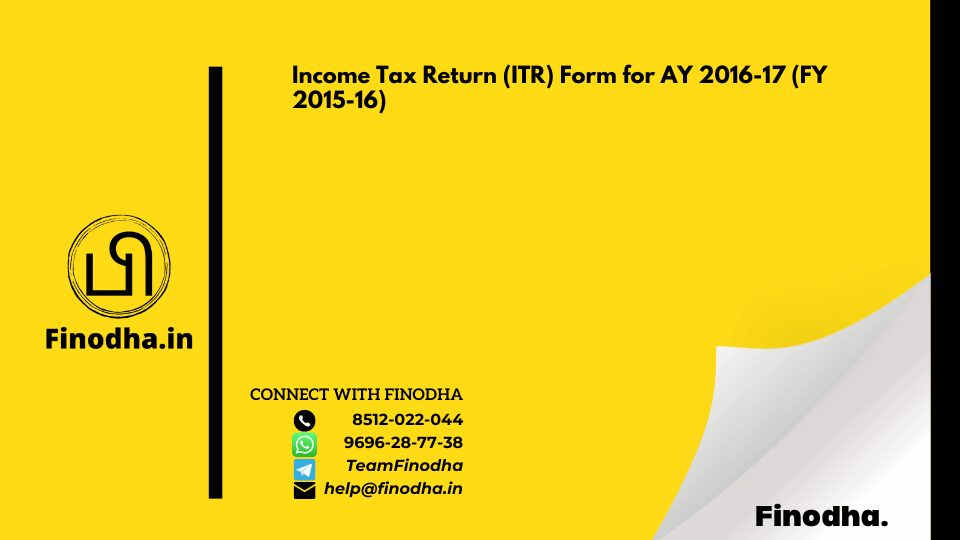| PART A- GENERAL | Personal Information | Name, Address, Date of Birth, PAN, contact details. |
| Filing Status | Employer Category, Tax status, Residential status, Return filed under the section. |
| PART B-TI | Computation of total income | Total Income from all income sources, Losses of the current year set off, Gross Total Income, Deductions under Chapter VI-A. |
| PART B-TTI | Computation of tax liability on total income | The Bank Account details, Verification, and TRP details (if any) are to be provided. |
| Schedule IT | Details of Advance Tax and Self-Assessment Tax Payments | BSR code, Date of Deposit, Challan number, Tax Paid |
| Schedule TDS | TDS-1: Details of Tax Deducted at Source from SALARY | TAN of Employer, Employer Name, Tax Deducted, etc. |
| TDS-2: Details of Tax Deducted at sources from Income other than Salary (As per FORM 16A) & Details of tax deducted at source on sale of immovable property u/s 194IA (Form 26QB) | TAN, Name of Deductor, Year of Deduction, Tax deducted, etc. |
| Schedule TCS | Details of tax collected at source | TAN of the collector, Name of Collector, Tax Collected, etc. |
| Manufacturing Account | Manufacturing Account for the financial year | Fill in the opening inventory, purchases, direct wages, direct expenses, factory overheads and closing stock. |
| Trading Account | Trading Account for Financial Year | Fill up the details of Trading Account for the financial year
such as Sales/Gross receipts of business/profession, duties, taxes and cess, etc. Further, in respect of supplies, closing stock and opening stock of finished goods, purchases, direct expenses, duties/taxes etc. |
| P&L | Profit and Loss Account for the financial year |
In case you were required to maintain regular books of accounts for the proprietary business or profession, please fill up details at item No. 13 to 60. In case you are not required to maintain regular books of accounts, please fill up details at item No. 61-65 falling into respective income sections |
| Balance-sheet | Balance Sheet as on 31st day of March | Balance Sheet of the business or profession as on 31st March of the FY in respect of the proprietary business or profession
carried out. I t shall include: Creditors, Debtors, Bank balance, Fixed Assets, etc. |
| Schedule OI | Other Information | Part A-OI, contains details of allowances & disallowances under Income tax act. Fill up the information of items which are applicable. |
| Schedule QD | Quantitative details | In Part A-QD, the quantitative details of trading and manufacturing account are required to be furnished in respect of principal items. |
| Schedule S | Details of Income from Salary | Name and PAN of the Employer, Address of the Employer, Salary, Perquisites, Allowance, etc. |
| Schedule HP | Details of Income from House Property | Details of House Property, Name and PAN of the Co-owners and Tenants, Details of Rent Income, Interest payable on Borrowed Capital, etc. |
| Schedule BP | Computation of income from business or profession | Income chargeable under the head ‘Profits and gains of business or profession’ is computed starting from the net profit before taxes arrived at in the profit and loss account |
| Schedule DPM | Depreciation on Plant and Machinery(Other than assets on which full capital expenditure is allowable as deduction under any other section) | It provides for computation of depreciation admissible under the
Income-tax Act for the year in respect of plant and machinery |
| Schedule DOA | Depreciation on other assets | Computation of depreciation admissible under the
Income-tax Act for the year in respect of other category of assets – land, building, furniture and fittings, intangible assets and ships. |
| Schedule DEP | Summary of depreciation on assets | It contains a summary of depreciation admissible under the
Income-tax Act for the year in respect of all category of assets |
| Schedule CG | Income from Capital Gains | Details about the Short term and Long term Capital gains, Sales consideration, Cost of Acquisition, Deductions under Section 54, 54B, 54EC, 54F, 54GB. |
| Schedule OS | Income from Other Sources | A dividend, Interest, Rental income from machinery, Winnings from lotteries, Crossword puzzles, Races, Games. |
| Schedule CYLA | Details of income after setoff of current year losses | Details of current year losses and its Inter Headset off |
| Schedule BFLA | Details of income after Set off of Brought Forward Losses of earlier years | Details of brought forward losses set off against current year’s income, total brought forward losses set off. |
| Schedule CFL | Details of Losses to be carried forward to the future years | Total of earlier year losses, current year losses, Total of carried forward to future years. |
| Schedule VI-A | Deductions under Chapter VI-A | Deductions under section 80C, 80CCC, 80CCG, 80D, 80DDB, 80E, 80G, 80TTA. |
| 80G | Details of Donations | Name of Donee, Address, City or District, State Code, PAN of Donee, Amount. |
| Schedule SPI | The income of specified persons (spouse, minor child, etc.) included in the income of the assessee (income of the minor child, in excess of INR 1500 per child, to be included) | Name and PAN of Person, Relationship, Nature of Income, Amount. |
| Schedule SI | Income chargeable to income tax at special rates | Description of Special Rate Income, Special Rate, Income, Taxable Income after adjusting min. chargeable to tax, Tax thereon. |
| Schedule EI | Details of Exempt Income (Income not to be included in Total Income) | Interest income, Dividend, Agricultural Income. |
| Schedule PTI | Details of Income from Business Trust or Investment Fund | Details of Income earned from Business Trust or Investment Fund as per section 115UA, 115UB. |
| Schedule FSI | Details of Income from outside India and tax relief | A country, Head of income, Income from outside India, Tax paid outside India, Tax payable in India, Relevant article of DTAA if relief is claimed u/s 90 or 90A |
| Schedule TR | Summary of tax relief claimed for taxes paid outside India | Details of tax relief claimed |
| Schedule 5A | Information regarding the appointment of income between spouses governed by Portuguese Civil Code | Name and PAN of a spouse, Income received under different heads, Amount appointed in the hands of the spouse, TDS details. |
| Schedule FA | Details of Foreign Assets and Income from any source outside India | Details of foreign bank accounts, financial interest in any entities, Immovable Properties, Other Capital Assets. |
| Schedule AL | Details of Assets and Liabilities | Details of an immovable asset, Details of a movable asset, Interest held in the asset of a firm or AOP. |















